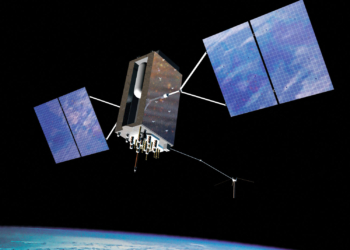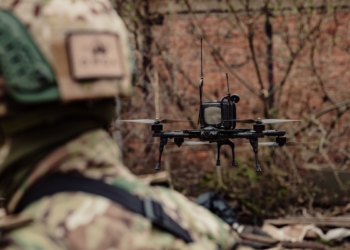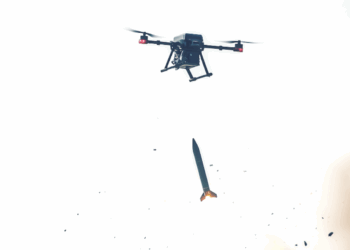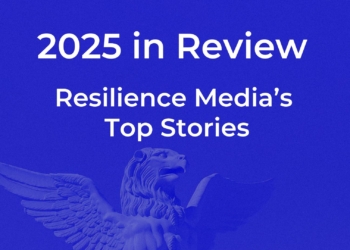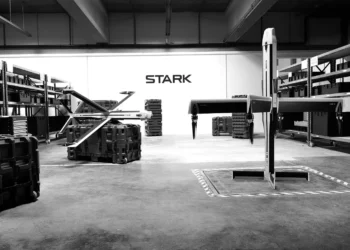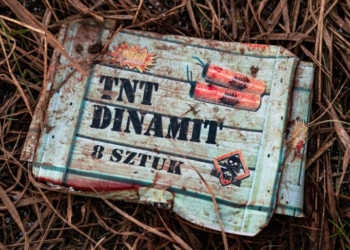The Drone Coalition’s most recent procurement process has come to a close, and in an unprecedented move, just one single company – an undisclosed company from Latvia – was announced as the winner of the €24 million tender rights.
According to sources in Ukraine, the Latvian company was the only one to pass the last and most challenging round of tests, which included navigating an electronic warfare (EW) denied environment – an outcome that underscores just how advanced fighting on the front lines has become against Russia.
This is the third procurement process under the Drone Coalition, a collective initiated by the governments of UK and Latvia and administered by the UK. It supplies Ukraine with the latest developments in unmanned technologies, with funding provided by the Drone Coalition Fund that is backed by 20 member states (Belgium and Turkey were added as the most recent partners).
The single recipient is notable because until now, all competitions have had multiple winners awarded the rights to enter into a contract with Ukraine to supply the country’s military with equipment.
The latest competition received 163 applications from the 57 countries that make up the Ukrainian Defense Contact Group (also known as the Ramstein group). Applicants underwent several rounds of rigorous testing. In a statement on its website, the Ministry of Defence of Latvia and the Drone Coalition, shared:
- 31 applicants made it through the first level of screening by coalition experts who evaluated applicants’ ability to deliver promised production on time, in the necessary quantity, and to the required quality.
- Of those, 14 companies were awarded contracts to provide test batches. Test batches were subject to testing in Latvia, one of the few countries in Europe that has the required environment for drone testing.
- 6 test batches were subsequently sent to Ukraine for a final round of testing.
A source in Ukraine shared that the final test was to fly through an EW-denied environment, simulating the Russian EW environment on the frontline. The source said that passing this third test was the most likely reason that other contenders failed.
The result of this tender suggests that most companies developing drone technologies outside of Ukraine are unable to keep up with the pace of innovation on the frontline, and require closer collaboration with Ukrainian partners in order to meet technical requirements.
Guna Gavrilko, Head of Military Public Relations at the Ministry of Defence of Latvia, declined to comment on the specific winner of this latest tender, but noted that local (Latvian) companies have been collaborating closely with those already working in Ukraine, and with the Latvian government itself.
“The drone industry learns from Ukraine,” she said. “They are at the forefront of technological innovation, and we work closely with them, observe, and listen, as they define the standard for modern-day warfare. The Ministry then made sure to invest in local drone companies at an early stage to support their further development.”
Previously, Ukrainian drone makers have been critical of what can be built by those who are not experiencing first-hand the challenges on the ground. Yaroslav Filimonov, CEO of Kvertus, one of Ukraine’s largest drone and counter-drone manufacturers, speaking on a panel at the 2025 Drone Summit in Riga, said that the best way to support Ukraine is by sending them money to build the technology themselves. His contention: no manufacturers outside of Ukraine could meet the current standards required.
So with only one manufacturer in the latest Drone Coalition round to have met Ukraine’s requirements, does this pose a supply chain risk to Ukrainian, and European, security?
“Each company is responsible for [its] own operational security measures. And no one said that they only have one factory,” said Gavrilko.
“If this is a good thing or a bad thing depends on your perspective,” she continued. “For the Latvians, of course it’s good news, because it means Latvian manufacturers are the only ones who can keep up with current requirements on the battlefield.”
“Of course, it could be considered a negative that of 57 countries, only one could make drones that meet real-life wartime requirements,” she said. “Everyone else seriously has to pull themselves together to catch up, but in the meantime, they’ll have to buy drones from Latvia.”
In a comment provided to Resilience Media after the publication of this story, the UK’s Ministry of Defence also noted that while the rigorous selection process helps raise the bar for all companies, it will also be using the outcome to help develop systems to ensure more companies are ready to make the grade in the future. More in the update below.
For its part, Latvia has a long track record in drone technologies.
In addition to having co-founded the Drone Coalition initiative, the country hosted the Drone Summit in May of this year, bringing together 1,500 heads of state, drone manufacturers, and military personnel. In May, it also announced the establishment of an Autonomous Systems Competence Centre. In June 2024, Latvia unveiled the largest military testing range in the Baltics at 24,000 hectares, hosting the annual NATO Digital Backbone Experiment (DiBaX) at the 5G testsite in the Ādaži military base.
Update: The UK Ministry of Defence has responded to a request for comment. A spokesperson noted that while while it is satisfied with the outcome of the procurement process, the MoD will continue to refine the process to ensure more companies are able to make it through.
“Our testing program gives these companies their first real chance to show off advanced capabilities, like flying drones far out of sight or operating them when radio signals are being jammed,” said the spokesperson. “This experience not only raises the bar for the entire industry, but also highlights how our process helps new companies quickly get their technology ready for real-world use.
“We are actively seeking ways to attract an even broader range of companies that can meet Ukraine’s battlefield requirements. This iterative approach ensures that our procurement process remains agile, efficient, and — most importantly — maximises our ability to provide the best possible support and technology to our Ukrainian partners.”



